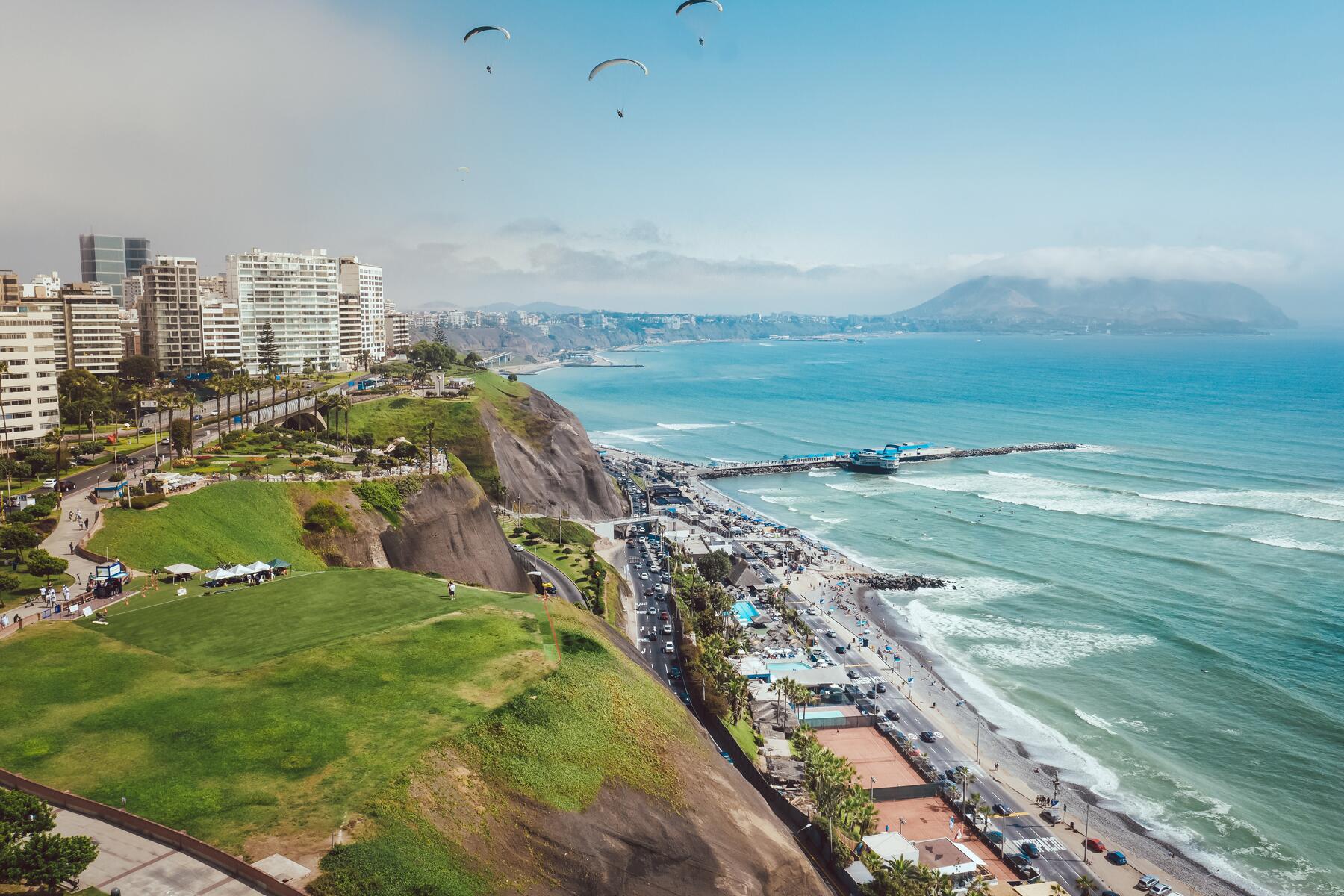The Central Highlands
The Central Highlands
The Central Highlands are where the Andes crash into the Amazon rainforest, and winding, cloud-covered mountain roads dip down into stark desert terrain. Defying the land’s inhospitality, its people continue to eke out a hardscrabble life that has changed little with the centuries.
For years, the Andean sierra, from Ayacucho to Tingo María, was one of Peru’s least-visited destinations. Geographically remote, with poor or nonexistent infrastructure in many stretches, it was also the epicenter of terrorist violence during the Sendero Luminoso (Shining Path) era of the 1980s, when thousands of peasants lost their lives in one of Latin America’s bloodiest convulsions. Today, however, with Peru’s internal conflict safely in the past, and improved transportation in virtually every distr...
Read MoreThe Central Highlands are where the Andes crash into the Amazon rainforest, and winding, cloud-covered mountain roads dip down into stark desert terrain. Defying the land’s inhospitality, its people continue to eke out a hardscrabble life that has changed little with the centuries.
For years, the Andean sierra, from Ayacucho to Tingo María, was one of Peru’s least-visited destinations. Geographically remote, with poor or nonexistent infrastructure in many stretches, it was also the epicenter of terrorist violence during the Sendero Luminoso (Shining Path) era of the 1980s, when thousands of peasants lost their lives in one of Latin America’s bloodiest convulsions. Today, however, with Peru’s internal conflict safely in the past, and improved transportation in virtually every district, increasing numbers of tourists are discovering the stark beauty and genial hospitality of what locals call el Perú profundo (deepest Peru).
No one knows when the first bands of settlers arrived on the puna (highland plains) or how long they stayed. Archaeologists have unearthed what they believe to be the oldest cave site in Peru at Pikimachay, near Ayacucho, as well as one of the oldest temples in the Americas at Kotosh. Other archaeological sites at Tantamayo and Garu show that indigenous cultures were thriving here long before the Inca or Spanish empires ever set foot on local soil.
When the Inca overran the region in the late 1400s, they incorporated the already stable northern settlement of Huánuco into their empire, making it an important stop on the route from the capital at Cusco to the northern hub of Cajamarca. To this day, Inca ruins can be seen scattered along the pampas. Then came the Spanish, who founded a colonial city at Huánuco in 1539, and turned nearby Cerro de Pasco's buried gold, silver, copper, and coal into the focus of the mining industry west of the Amazon Basin. They ruled until 1824, when Simón de Bolívar's troops secured Peru's autonomy by defeating the Spanish on the Pampa de Quinua near Ayacucho.
The Central Highlands have seen some of the fiercest clashes in Peruvian history. Apart from the wars between the Inca and the Huanca in the 16th century, and the battles for independence in the 19th, the Shining Path movement, led by ex-philosophy professor Abimael Guzmán Reynoso, quickly earned the distinction of being Latin America’s most bloodthirsty guerrilla organization as it terrorized the local peasantry in the 1980s. Between this sinister Maoist death cult and the military’s brutal reaction, some 70,000 people died before police finally captured Guzmán in a Lima dance studio in 1992. Shining Path is now a shadow of its former self, and apart from narcotrafficking and the occasional protest from coca growers and unions, the region is generally calm.
Most Central Highlands residents still depend on the crops they grow and the animals they breed—including guinea pigs and alpaca. Local festivals coincide with the rhythms of the harvest, and traditional recipes and artisanship predate the Incas by hundreds of years. Visitors to the region are invariably beguiled by local hospitality, even as they marvel at the thundering rivers, frozen peaks, and icy waterfalls that make up the sublime landscape around them.
Recommended Fodor’s Video
Hotels
Things to Do
Things to Do
Explore Things to Do
Find the perfect tours and activities in The Central Highlands.
Where to Eat
Where to Eat
Need to Know
Need to Know
Language
Spanish, Quechua, AymaraNearby Airports
LIMElectrical Outlets
220v/60 cycles; plugs are U.S. standard two-prong or European standard with two round prongs. Power converter needed.Currency
Nuevo solLanguage
Spanish, Quechua, AymaraElectrical Outlets
220v/60 cycles; plugs are U.S. standard two-prong or European standard with two round prongs. Power converter needed.Currency
Nuevo solNearby Airports
LIMWhen to Go
The region’s best weather falls in the dry season—May through October—when the skies are clear, and daytime temperatures are moderate (nights...Read More
Neighborhood Guides
Discover the best neighborhoods in The Central Highlands with curated recommendations from our editors.
essentials
transportation
resources
When to Go
The region’s best weather falls in the dry season—May through October—when the skies are clear, and daytime temperatures are moderate (nights...Read More
Neighborhood Guides
Discover the best neighborhoods in The Central Highlands with curated recommendations from our editors.
When to Go
The region’s best weather falls in the dry season—May through October—when the skies are clear, and daytime temperatures are moderate (nights...Read More
Neighborhood Guides
Discover the best neighborhoods in The Central Highlands with curated recommendations from our editors.
essentials
transportation
resources
Articles
Articles See All
Guidebooks
Guidebooks
Our worldwide travel correspondents bring you the best and most up-to-date coverage of over 7,500 global destinations.
Shop NowFodor's Essential Peru: with Machu Picchu & the Inca Trail
Whether you want to hike the Inca Trail to Machu Picchu, explore the Peruvian Amazon, or...













